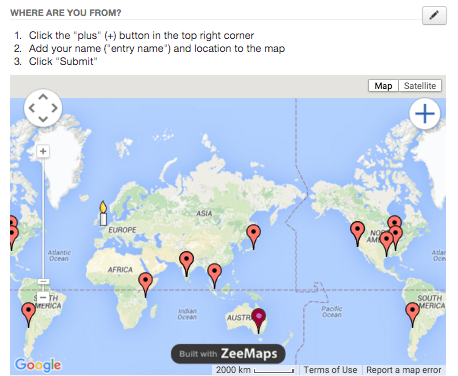5 Onboarding Best Practices To Help Learners Prepare For Courses

The first couple actions that a learner takes in an online learning course are crucial for their experience and path towards completing a course. For many learners, an online learning experience might be a new and unaccustomed experience. As Learning Experience Designers, it is our responsibility to create a learning environment that helps learners feel confident and prepared for success when they first enter the course. While the first learning actions can vary from course to course, we recommend a strong and clear onboarding process for learners to familiarize themselves with their new learning environment where they will learn to collaborate and learn from their peers before beginning any learning tasks. What follows are 5 onboarding best practices that we’ve seen work with the greatest results in our courses.
1. Define the learning path
Learners often take online courses on top of their regular work or life commitments. Help define their learning path early. What kind of assignments or requirements can the learner expect from the course? If they will be joining a team, help them get into a team quickly. If they will have different team formation options in the course, share that information with them from the beginning. Helping learners visualize their learning path and acknowledge the commitments that are required to have a successful learning experience will eliminate any unexpected surprises or hiccups during the course.
2.Try different mediums
When possible, try different mediums to communicate onboarding information to your learners. Remember, this information will help them define their learning path (mentioned above) which is crucial towards their successful learning experience. What is your learners’ preferred method of consuming information? For some, it might be reading text from a mobile phone. For others, it might be watching a video on a laptop. By trying different mediums to communicate information, we are able to maximize the reach to our learners.
3. Repeat, repeat, repeat!
What is the most important information that you can communicate to your learner to have a successful learning experience? Is it to join a team? Or to create a profile? Whatever this one action item or piece of information is, don’t be afraid to repeat it! Many learners might catch information from one source (email) but not another (welcome message in the homepage). For important messages, we recommend that you post it in multiple locations, including but not limited to: email, welcome message, announcement, lecture page, and discussion board.
4.Use of single call-to-action button
Remember the important piece of information that you should repeat, repeat, repeat? Creating a single call-to-action button in an email or on the homepage will further help your learners identify and prioritize their actions within the course. You can reach out to your partner manager to learn how to create these call-to-action buttons.
5. Recognize and Acknowledge Learners
In a large online (or even small) course, learners might feel like they can hide in the “back seat” of the auditorium. By acknowledging learners in your messages and onboarding information, the course will feel more intimate and personal. For example, you might shout-out to a particular learner who has been particularly active in the discussion forum, or even share with the entire course some fun information about the community using infographics or interactive maps (our favorite is Zeemaps, which can directly embed into the homepage).
In addition to these onboarding best practices, here are some fun tools that we use to support these methods:

To learn more about how to create an effective online learning experience, join us for our free Foundations of Learning Experience Design course!
Blog
In a Harvard Business School case study titled Creating a virtual internship at Goldman Sachs, the authors describe how The Goldman Sachs Group successfully transitioned a program serving thousands of interns into one that became entirely virtual.
Blog
Craig Weiss of The Craig Weiss Group, renowned for his expertise in learning technology, e-learning and AI in the workplace, spoke about AI In L&D: Roles, Risks, and Opportunities.
Blog
For Marriott, emerging from the pandemic presented a key opportunity to take stock and strategize how to improve worker retention and customer service — and the hospitality chain recognized that cultivating the best possible leaders was essential for navigating the changing landscape.
Blog
Learning management is a perennial challenge for L&D teams. Despite the emergence of more sophisticated learning and business analytics techniques, struggles with learning measurement persist at frustrating levels. Closing the gap between the boardroom and L&D around actual business or organizational impact is a required skill for learning leaders to master.
Blog
A social learning platform activates the deep and continual skill development needed for enduring behavior change in the context of modern business.
Blog
NovoEd enables executive education providers to build online learning experiences for custom executive education programs, open enrollment courses, and more.